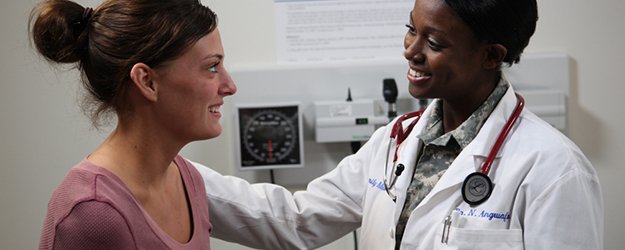By Richard J. Curley, Program Evaluation Consultant
Army Public Health Center (Provisional)
In recent years, medical advances in both early detection and treatment have helped millions of women survive breast cancer. This year, 230,000 women will be diagnosed with breast cancer and currently more than 2.8 million breast cancer survivors are living in the United States. However, breast cancer continues to be the most commonly diagnosed cancer among women worldwide and the second leading cause of death among women in the United States.
What is breast cancer?
Breast cancer is a disease that causes normal cells in the breast to change and grow out of control. Abnormal cells group together, also known as malignant tumors, destroy body tissue that may spread throughout the body. According to the American Cancer Society about 1 in 8 women in the United States will develop invasive breast cancer during their lifetime. A woman’s risk increases with age; thus it is important to detect breast cancer early through screening.
Why is early detection important?
The chances of survival are much higher if the cancer is detected in the early stages. According to the National Breast Cancer Foundation, when breast cancer is found early before spreading through the body, the five-year survival rate is 98 percent.
The U.S. Centers for Disease Control and Prevention recommends breast cancer screening tests for early detection. This means checking a woman’s breasts for cancer before there are signs or symptoms of the disease. Talk with your doctor about which tests are right for you, and when you should have them.
Mammograms
To increase the chances of early detection, the CDC recommends that women 50-74 years of age get a screening mammogram every 2 years. Women 40-49 years should discuss with their medical providers as to when they should start getting mammograms. A mammogram is an X-ray of the breast. Mammograms are the best way to find breast cancer early, when it is easier to treat and before it is big enough to feel or cause symptoms.
Clinical breast exam
All women should receive a clinical breast exam during their annual physical. A clinical breast exam is an examination by a doctor or nurse, who uses his or her hands to feel for lumps or other changes.
Breast self-exams
Women can also aid in early detection by examining their own breasts. Breast self-exams involve looking at and feeling both breasts with your fingers to check for lumps. Adult women of all ages are encouraged to perform a breast self-exam at least once a month. It is important that women know what is normal for the shape, look, and feel of their breasts, so that they are able to recognize any changes in the appearance of the nipple or breast that are different from normal. If there are any signs or symptoms, a health care provider should check them out immediately.
Symptoms to look for include:
• Lump in the breast
• Thickening of the breast skin
• Rash or redness of the breast
• Breast swelling
• New onset of breast pain
• Dimpling around the nipple or on the breast skin
• Nipple pain or the nipple turning inward
• Nipple discharge
• Lumps in the underarm area
Changes in your breast do not always mean that you have breast cancer. In fact, 80 percent of breast lumps are found to be non-cancerous. Only an experienced health care provider can tell you what other tests should be performed to determine if you have breast cancer.
Remember to be proactive about your health. Having healthy behaviors coupled with appropriate medical screening is a primary method of preventing breast cancer. To reduce your risk, keep a healthy weight, exercise regularly, get enough sleep and don’t drink alcohol or limit alcoholic drinks to one a day.
The Performance Triad provides tips about getting adequate sleep, proper nutrition and exercise. For information, click here.

